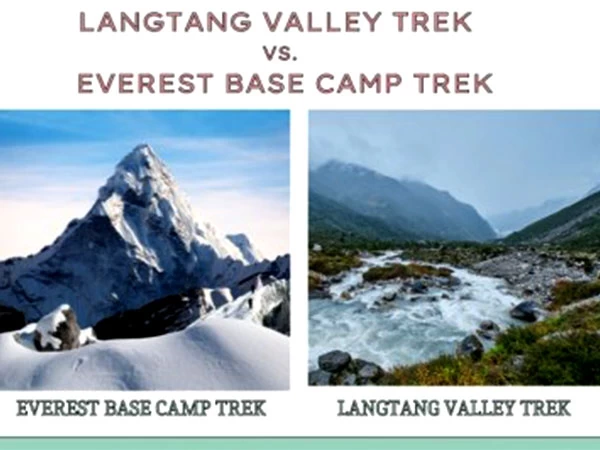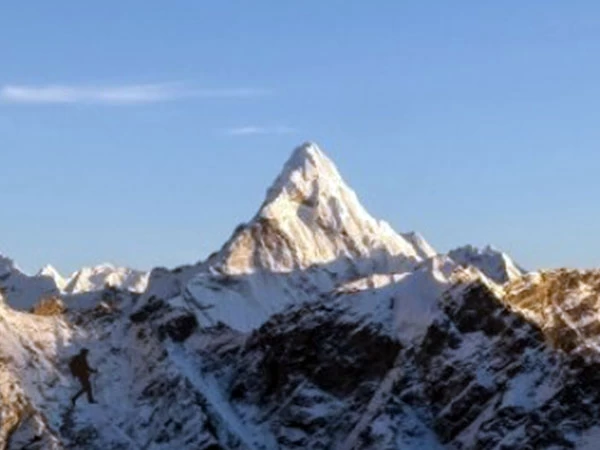Mera Peak, which rises at 6,476 meters (21,247 feet), is one of the tallest trekking peaks in Nepal with spectacular views into the grand Himalayas. Mera Peak Climbing is popular for the non-technical climb hence attracting climbers worldwide to witness the grand of Everest, Lhotse, Makalu, Cho Oyu, and Kanchenjunga competitive landscape. This guide intends to give you the full picture of what is required for you to successfully summit Mera Peak and be as ready as possible for this thrilling experience.
1. Preparing for the Climb
Physical Fitness Requirements
Mera Peak climbing requires a good level of physical fitness. You have to be in top cardiovascular shape or a mustache, with really strong legs. Activities such as running, cycling, and freestyle stroke (swimming) combined with some form of bodyweight or weightlifting exercise will aid in building your endurance.
Essential Training Tips
Altitude Training: Mera Peak is a high-altitude climb so consider altitude training to accustom your body to less oxygen.
Hiking Training: Daily hikes in rugged boots with a heavy fill do wonders for conditioning those calves.
Strength: Squats, lunges plus core strength to improve balance and stability.
What Gear You Will Need?
Clothing: Layered clothing, including thermal wear, down jacket and waterproof pants+waterproof Jacket.
Footwear: You need waterproof trekking boots with good ankle support.
Gear: Crampons, Ice Axe Tents (face similar ), Harnesses(2) (){Exposure}Climbing harness helmets trekking poles
Items: Sunglasses, headlamp, -20°C/-4F sleeping bag, and a good backpack.
2. Best Time to Climb Mera Peak
Seasonal Considerations
Mera Peak Climbing's best seasons are Pre-monsoon (March to May) and Post monsoon (September to November). As you know in this period weather is best and the sky remains clear most of the time so climbing can be done.
Weather Conditions
Daytime temperatures on higher elevations can be between -4°C to-10°C during the climbing seasons and at night it drops below that. The trails are likely to be slippery and dangerous in the monsoon season (June - August) with rain, while winter (December - February), on other beaches is cold.
Optimal Climbing Windows
The most optimal time to ascend is in the early hours of daylight when conditions are more consistent and visibility is highest. They usually start their summit attempts at 2 AM to past 5 AM before the afternoon winds pick up and hopefully miss any storms as well.
3. Acclimatization & Route Planning
Importance of Acclimatization
Proper acclimatization is necessary to prevent AMS. Going slow and taking rest days as you ascend gives your body time to acclimate.
Detailed Route Overview
Flight to Lukla, trek to Chutanga: The Trek starts with a flight from Kathmandu/Lukla and walks to Chutanga.
Chutanga to Thuli Kharka (via Zatrwa La Pass) - Hike Up and Over the Zatrsu Lead Passing Through View of Entire Travel.
Flight to Lukla, trek to Chutanga: The Trek starts with a flight from Kathmandu/Lukla and walks to Chutanga.
Thuli Kharka to Kothe: After descending into Hinku Valley, hike through beautiful forests of lush green plants and camp in Kothe
Kothe to Thangnak - Follow the Hinku River valley to the small Sherpa village of Thangnak.
Thangnak to Khare: Onward your trek will take you to Khare, where trekkers spend extra days acclimating before the climb.
Khare to Mera Base Camp: A difficult one yeah, but you will get what I mean once we reach the Mera Base Camp.
From Base Camp to High Camp: Acquire a height at the final of all previous halt, that is getting on high camp before going for the summit.
High Camp to Summit: Early start to enjoy the awesome 360-degree view from the summit.
4. Detailed Itinerary
Day-by-Day Breakdown
Day 1: Fly to Lukla and trek to Chutanga.
Day 2: Acclimatisation Day In Chutanga.
Day 3- Zatrwa La Pass (4610m) and trek to Thuli Kharka
Day 4: Trek to Kothe.
Day 5: Trek to Thangnak.
Day 6: Rest day and acclimatization in Thangnak
Day 7: Trek to Khare.
Day 8 Acclimatisation and Training at Khare.
Day 9: Fly into Mera Base Camp
Day 10: Trek to High Camp.
Day 11: Summit day and descent to High Camp
Day 12: Descend to Khare.
Day 13: Trek to Kothe.
Day 14: Trek to Thuli Kharka.
Day 15: Trek to Lukla.
Day 16: Fly back to Kathmandu.
Daily Highlights and Points of Note:
Every day brings new challenges as well as wonderful views like the green hard forests along with glacial valleys and the view from above once on top.
When you are supposed to rest and acclimatize.
As the climb of Mera Peak is fairly demanding, it may be stretched over two full days which will allow you to split some hard climbing in half and leave that luxury of being able to properly rest Each day during both nights on Thangnak.
5. Safety and Risks
Common Challenges and Hazards
Tourism is limited by altitude sickness, severe changeability of the weather, and difficult territory. Altitude sickness manifests itself in the form of headaches, nausea, and dizziness.
Safety Measures and Emergency Procedures
But always climb with a professional guide, stay hydrated, and never rise too fast. Learn about emergency procedures and how to use oxygen & descent protocols.
Professional Guide is Essential
Professional Guide: For safety and to get inside knowledge about the local area, as well as solid navigation on route emergencies.
6. Tips for a Successful Climb
Expert Advice from Experienced Climbers
Stay positive, pace yourself, and maintain a steady rhythm. Regularly check your gear and stay in communication with your team.
Mental and Physical Preparation
Mental resilience is as important as physical fitness. Stay motivated and visualize your success.
What to Expect on Summit Day
Expect a long, grueling day starting in the early hours. The climb involves steep ascents and the use of technical gear, but the reward is an unforgettable view from the summit.
Post-Climb Considerations
Recovery Tips
Take It Easy, Drink Plenty of Water & Slowly Get Back To Your Usual Routine Get a massage to reduce muscle soreness.
Celebrating Your Achievement
Celebrate your wins together with the team, rub it into their faces, and ride on that sense of fulfillment.
Return Journey and Reflection
On route back to Lukla and then on [to] Kathmandu, time is provided away from the mountains where you can reminisce upon what has just been accomplished. Journey into this process and remember the journey.
Conclusion:
Mera Peak Climbing is a lifetime of adventures that combines physical challenges, excitement, and diversity in landscape. Given good preparation, sufficient acclimatization and a strong attitude then climbing Mera Peak makes for an achievable aspirational target with a very high reward. For the seasoned climber or avid trekker, Mera Peak offers an unforgettable Himalayan journey



